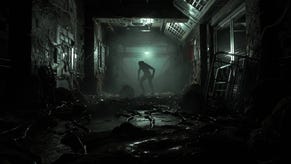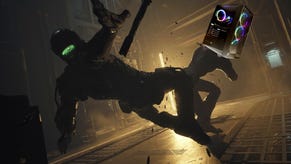The Callisto Protocol’s AI is more interested in scaring you than killing you
Striking Distance wants to kill you, sure – but according to Striking Distance’s CTO, Mark James, it’d much rather scare you to death than bludgeon you.
The Callisto Protocol gets constantly compared to Dead Space – and it makes sense, really. A lot of the developers are the same, a lot of the core ideas are the same, and it even looks quite similar, really. But this new venture from young developer Striking Distance is doing more with its horror than Dead Space could back in 2008; we’re 14 years down the line, now, and technology has come a long way.
Striking Distance really cares a lot about horror. The staff have been ruthless in studying the psychology of fear, and have boiled down the tenets of human dread to how we respond to atmosphere, tension, brutality, helplessness, and humanity. Taking each of these five strands and tinkering with them individually, Striking Distance reckons it’s made one of the scariest games ever made – no matter what your own personal tolerance for horror is.
.jpg?width=690&quality=70&format=jpg&auto=webp)
Why is the developer so confident? A lot of it comes down to its tech. Mark James, chief technical officer at the studio, tells me in an interview that new-gen games can do things that just weren’t possible, even a few years ago. Whilst “50% of horror is in audio,” James assures me that a large portion of The Callisto Protocol’s dread comes from its, frankly, sadistic AI.
“We have amazing AI,” he tells me. “Our AI will sometimes make the decision not to attack you. It will instead jump into a vent in front of you – making sure you see it happen – so you now know that an enemy is in there, and it’s just waiting for the next time it can pop out of another vent and attack you.”
Previously, James had told me that the whole game has a “full vent system” for its creatures to come in, and to go out of. You might return to a corridor and you see a discarded vent grate on the ground… and then you see a hole the ceiling. You’re left with this uneasy sense that something has been here, but you don’t know what. Or, indeed, where it is now.
“It’s the ‘open door’ of horror tropes, right?” grins James. “‘I didn’t open that door… what opened that door?’ It makes you question that you’re not alone. It’s a very simple change in the environment that makes the player question what’s going on – and that’s very powerful.”
.jpg?width=690&quality=70&format=jpg&auto=webp)
I tell James that this reminds me of the AI Director from the Left 4 Dead games, and how it would intentionally avoid placing enemies in your path to mess with you before doubling down on sending a wave of the worst undead hordes at you. He smiles, nods, and continues:
“The first time that happens, when we get you thinking ‘why did that guy not attack me, why did it run away?’ – that’s when we’ve got you. Because, as gamers, we assume that everything on the screen is going to attack us. The first time that doesn’t happen, we make you really uncertain. So then we can use the audio engine to give you little clues about where this thing is around you. You might hear it scuttling off just over there, or you might hear a distant bump, 20 feet away. Or we might even position it in another room. The AI is looking for the best time. Whatever is going to make it worse for you [laughter].”
But what if you die later on in the level and you come back here, face the same enemy again? Will it act the same – jump into vent X, appear in room Y, attack you with behaviour Z? You wish The Callisto Protocol would make it that easy.
“The AI is always finding the best way to attack. Sometimes that’s them trying to get closer to you. Sometimes they’re reacting to the way they’re playing to better take advantage of you. Say, for example, you keep using long-range ballistics – the enemy will move out of your line of sight, probably into a vent, and find another way to come to you.”
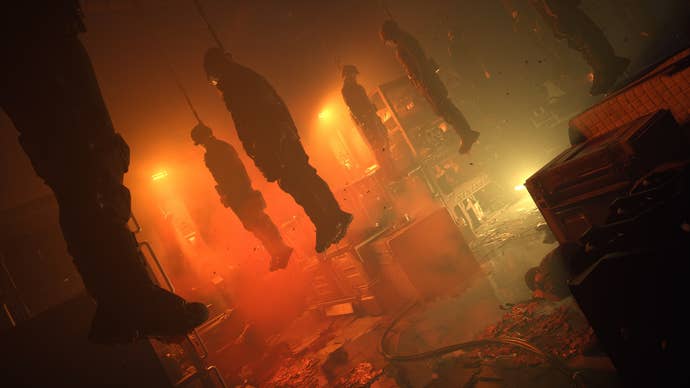
So, if you keep using the GRIP (think Half-Life’s grav gun, but a little weaker) and bring enemies towards you to bash them with your stun baton, they’ll get wise to it. They’ll block, and counter. Or they’ll make themselves more of a threat at close range so you don’t want them anywhere near you.
“If you repeatedly use the same type of attack, the enemy will intelligently change their behaviours. It all links back to that changing virus – it’s mutating and evolving the humans that were in the prison to be better opponents. Opponents that can kill you more easily!”
The AI that hides the enemies from you isn’t the end of how you constantly need to weigh up threat versus survivability, either. This virus that hides within your foes manifests as a physical eruption, sometimes; where tentacles rip through chests or dismembered arms, primed to attack you. If you miss your shot at these tentacles, or an invisible timer counts down and you’ve not dealt with them effectively, they become more aggressive.
“If you shoot at them, and miss the area you need to hit… you will decrease that timer more, and you will make them more aggressive,” laughs James. “So you better make sure that one shot is good. Otherwise, they’re going to mutate quicker – and that makes them more powerful, it makes them faster, it makes them harder to kill. What you could have killed in one shot will now take you four.”
.jpg?width=690&quality=70&format=jpg&auto=webp)
In a survival horror world, where ammo is ‘strictly limited’ that’s not ideal, is it? James tells us that whilst the whole ‘shoot their limbs!’ system in Dead Space was great, Striking Distance wanted to take it one step further in The Callisto Protocol – give you more ways to respond, more areas to shoot, suffer more consequences if your gamble doesn’t pay off.
“We’ve still got that amazing gore system in our game, like Dead Space had, so you can sever a limb on what you’re fighting, but there's a risk reward scenario in doing that. If you make it more aggressive and let it mutate, it’ll just… grow back that limb! So going for that option in the first place is just a waste of ammo, at that point.”
From what I’ve seen and heard about The Callisto Protocol so far, I’m sold on the idea that it will live up to its promises and deliver as a true, new-gen horror game. I’m dreading playing it – and that can only be a good thing. Right?
The Callisto Protocol is coming to PC, PS4, PS5, Xbox One, and Xbox Series X/S on December 2.
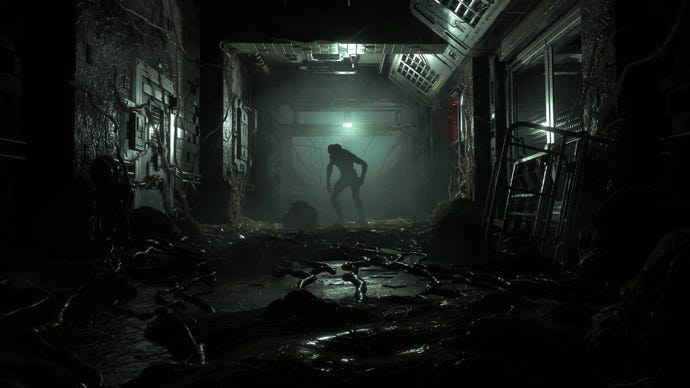


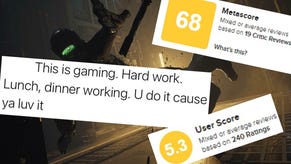
.jpg?width=291&height=164&fit=crop&quality=80&format=jpg&auto=webp)

